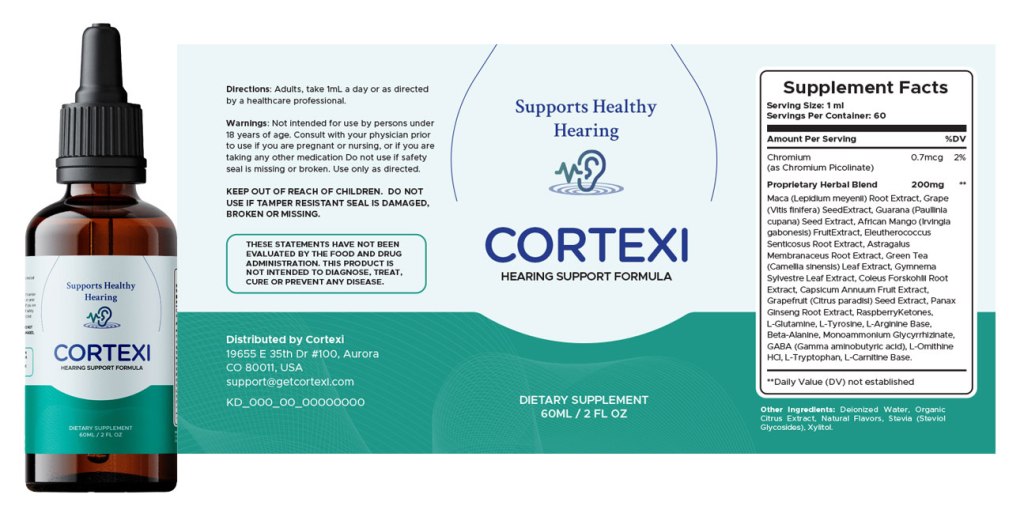- Introduction to Deciphering Healthcare Jargon: A Comprehensive Guide to Medical Insurance Terminology
- Annual Deductible: Breaking Down the Entry Fee
- The Annual Deductible Analogy: The Club Entry Fee
- How Does it Impact You?
- Deciphering Averages and Implications
- Final Thoughts
- Annual Maximum Benefit: Your Health Insurance’s Spending Cap
- Decoding the Annual Maximum Benefit
- Why Does It Exist?
- The Implications of Hitting the Ceiling
- Exceeding the Limit: What Next?
- What About Unlimited Benefits?
- Benefit Period: Timing Your Insurance Coverage Right
- What Exactly Is a Benefit Period?
- Benefit Period vs. Plan Year vs. Calendar Year
- Why Does the Benefit Period Matter?
- Cracking the Code: How to Determine Your Benefit Period
- Calendar vs. Plan Year: Decoding the Timeline of Your Health Insurance
- Calendar Year: The Universal Time-frame
- Plan Year: Tailored to Your Policy
- Why the Distinction Matters
- How to Determine Your Plan Year
- Claim: Navigating the Path to Payment in Health Insurance
- What is a Claim?
- The Journey of a Claim
- Why Claims Matter
- Claim Appeals: Advocating for Your Right to Coverage
- Understanding Claim Appeals
- Why Might You Need to Appeal?
- Navigating the Appeal Process
- Coinsurance: The Shared Health Bill Dance
- Defining Coinsurance
- The Coinsurance Equation
- Coinsurance vs. Deductible
- Why Coinsurance?
- Spotting Coinsurance in Action
- Wrapping Up: The Bigger Financial Picture
- Coordination of Benefits: The Health Insurance Ballet
- What is Coordination of Benefits (COB)?
- Why COB is Necessary
- Order of Payout: Who Pays First?
- Navigating the Dance
- Final Thoughts
- Copayment (or Copay): The Fixed Fee Tango of Health Services
- What Exactly is a Copayment?
- The Rationale Behind Copays
- Copays vs. Other Out-of-Pocket Costs
- Points to Ponder
- The Dance of Healthcare Costs
- Covered vs. Non-covered Health Service: Deciphering Your Insurance Menu
- What Does “Covered” Mean?
- The Flip Side: Non-covered Services
- Why the Distinction?
- Know Your Menu: The Importance of Clarity
- Parting Thoughts
- Dependent: Navigating the Intricate Web of Insurance Dependency
- Defining a Dependent
- Types of Dependents
- Why Recognize Dependents in Insurance?
- Dependencies and Limitations
- Unraveling the Dependency Web
- Explanation of Benefits (EOB): Your Guide Through the Insurance Payment Labyrinth
- What is an Explanation of Benefits (EOB)?
- Breaking Down the EOB: Key Components
- Why Do You Receive an EOB?
- EOB vs. Medical Bill: Spotting the Difference
- Why is the EOB Important?
- Decoding Your EOB: Steps Forward
- Exclusions: The Health Insurance Fine Print You Can’t Afford to Ignore
- What Exactly Are Exclusions?
- Common Exclusions You Might Encounter
- Why Do Exclusions Exist?
- Navigating the Maze of Exclusions
- Exclusions: A Balancing Act
- Health Coverage: Navigating Your Medical Buffet
- Understanding Health Coverage
- Common Items on the Health Coverage Menu
- Health Coverage Limitations
- Feast Wisely!
- Health Insurance/Medical Insurance: Your VIP Pass to Medical Care
- The Backstage Pass to Health
- What Your VIP Pass Includes
- Limitations of the Pass
- Rocking Your Health Journey
- Healthcare: Unpacking the Vast World Beyond Doctor Visits
- The Foundation: Primary Care
- Specialized Destinations: Specialty Care
- Emergency Services: Rapid Response
- Wellness District: Preventive Care
- Rehabilitation Borough: Physical and Occupational Therapy
- The Silent Supporters: Mental Health and Counseling
- The Interconnected Web
- In-Network vs. Out-of-Network: Navigating the Financial Implications of Your Healthcare Choices
- The Inner Circle: In-Network Providers
- The Outsiders: Out-of-Network Providers
- The Wallet Impact: Financial Implications
- Making Informed Choices
- Lifetime Maximum: Your Insurance’s Ultimate Lifeline Limit
- What Exactly is a Lifetime Maximum?
- Why Introduce Such a Limit?
- The Implications for Policyholders
- The ACA and Lifetime Maximums
- Navigating the Limitations
- Medicaid: The Helping Hand of Health Coverage
- Understanding Medicaid
- Who Qualifies for Medicaid?
- The Affordable Care Act (ACA) & Medicaid Expansion
- Benefits Under Medicaid
- Medicaid’s Vital Role in Public Health
- Medicare: Navigating the Federal Lifeline for the Elderly (and Beyond)
- What is Medicare?
- Different Parts of Medicare
- Who’s Eligible?
- The Cost Aspect
- Medigap: Filling in the Medicare Gaps
- Medicare’s Continued Relevance
- Network: The Healthcare Web that Holds Your Wallet’s Strings
- Decoding the Network
- Why Do Networks Exist?
- In-Network vs. Out-of-Network: The Financial Implication
- Networks and Plan Types: The Interplay
- The Power of Informed Choices
- Out-of-Pocket Maximum: The Financial Safety Net in Healthcare
- Unraveling the Concept
- What’s Included?
- Why It Matters?
- Variability and Shopping for Plans
- Your Financial Lifeline
- Physician Referral: The Medical Matchmaking Behind Specialized Care
- Understanding the Essence
- Why the Matchmaking?
- The Process: How it Works
- Trust in the Process
- Plan Document: Navigating Your Health Insurance’s Rulebook
- Decoding the Plan Document
- What’s Inside?
- Why is the Plan Document Important?
- Tips for Navigating Your Rulebook
- Pre-Authorization: The Green Light in Healthcare
- What is Pre-Authorization?
- Why the Need for Pre-Authorization?
- The Pre-Authorization Process
- The Implications
- Tips to Navigate Pre-Authorization
- Wrapping Up
- Understanding Preventive Healthcare
- What’s Typically Covered?
- Benefits of Preventive Healthcare
- How to Make the Most of It
- To Conclude…
- Primary, Secondary, and Tertiary Insurance: Navigating the Relay Race of Coverage
- The Starting Line: Primary Insurance
- The Second Lap: Secondary Insurance
- The Final Stretch: Tertiary Insurance
- Coordination of Benefits: The Relay Rulebook
- Concluding Thoughts
- Provider: Knowing the Key Players in Your Healthcare Team
- The Broad Strokes: What is a Provider?
- Breaking Down the Types of Providers
- In-Network vs. Out-of-Network Providers
- Concluding Thoughts
- Self-funded vs. Fully Insured Policy: Choosing Your Financial Safety Net
- The Basics: What Are We Talking About?
- 1. Self-Funded (or Self-Insured) Policy
- 2. Fully Insured Policy
- Deciding Between the Two
- Concluding Thoughts
- Subscriber: Your Health Insurance Protagonist
- Defining the Subscriber
- Roles of the Subscriber
- Subscriber vs. Dependent
- Why This Role is Crucial
- A Few Pro Tips for Subscribers
- Concluding Notes
- Navigating the Healthcare Maze: The Power of Knowledge
- Understanding: Your Best Ally
- Empowerment through Insight
- The Road Ahead: A Confident Stride
- A Final Word
Introduction to Deciphering Healthcare Jargon: A Comprehensive Guide to Medical Insurance Terminology
Embarking on the journey to grasp healthcare jargon can feel like venturing into uncharted territory. But don’t fret – we’re here to make this ride as smooth as an ambulance glide on fresh tarmac. Amidst the whirlwind of terms, acronyms, and policies, we aim to be your guiding light. From the most basic terminologies to the slightly intricate, we’ll decode each one for you. So, take a deep breath, strap in, and let’s dive deep into the world of medical insurance terminology together!

Annual Deductible: Breaking Down the Entry Fee
Navigating the labyrinth of health insurance can sometimes feel like deciphering ancient hieroglyphics. One of the pivotal terms that often pops up is the “Annual Deductible.” Think of it as the threshold you need to cross before unlocking the full benefits of your insurance plan.
What Exactly is an Annual Deductible?
The annual deductible in health insurance refers to the amount you, the policyholder, must pay out-of-pocket for medical services each year before your insurance company starts chipping in. In essence, it’s a way of sharing the responsibility for medical costs between the insurer and the insured. After all, if insurance covered everything from the get-go, we’d all rush for every sniffle or cough, leading to overburdened healthcare systems and skyrocketing insurance premiums.
The Annual Deductible Analogy: The Club Entry Fee
Imagine a posh club with top-notch amenities – from a world-class DJ to gourmet food. However, before you can enjoy these delights, there’s an entry fee to pay. This entry fee ensures that only those who value the club’s offerings make their way in. Similarly, the annual deductible is like this entry fee. You pay it to ensure that you genuinely need the health services and aren’t just overusing the system.

How Does it Impact You?
The deductible amount can significantly impact your annual healthcare costs. Opt for a higher deductible, and your premium (the amount you pay monthly/annually for the insurance policy) typically drops. Conversely, a lower deductible usually means higher premiums. It’s a balancing act between what you can afford to pay now (premiums) versus what you might need to pay later (deductible).
Deciphering Averages and Implications
According to the Kaiser Family Foundation (as of my last training data in 2021), the average annual deductible for single coverage in employer-sponsored health plans was around $1,644. However, these figures can vary widely based on factors like location, plan type, and employer size. Understanding these averages is crucial as it allows you to gauge where your plan stands in the grand spectrum of health insurance policies. Additionally, it helps you budget for potential out-of-pocket costs effectively.
Final Thoughts
When choosing a health insurance plan, it’s paramount to not only look at the premium but also to understand the deductible. By gauging both, you can find a balance that works for your financial situation and health needs. So, next time you’re examining a policy, think of that club’s entry fee. Ask yourself, “Is this an amount I’m comfortable paying upfront to unlock superior health benefits?”
In the end, knowledge is power, and understanding terms like “Annual Deductible” empowers you to make informed decisions, ensuring you get the most bang for your buck.

Annual Maximum Benefit: Your Health Insurance’s Spending Cap
Health insurance is a double-edged sword. While it acts as a protective shield against unpredictable medical costs, it often comes with a set of terms and conditions. One such term that catches many policyholders off-guard is the “Annual Maximum Benefit.” This seemingly innocuous term can make a world of difference in how you approach medical care for the year.
Decoding the Annual Maximum Benefit
The Annual Maximum Benefit, often referred to as the “plan year benefit maximum,” is the highest amount an insurance company will pay for a policyholder’s covered healthcare services in a single year. Anything beyond this cap, and the policyholder is generally responsible for the costs. It’s essentially the insurer saying, “Here’s our limit on supporting your medical expenses for the year.”
Why Does It Exist?
Like any business, insurance companies need to manage risks and ensure they remain profitable. By setting a maximum benefit, they can predict their potential payouts for each policyholder and keep premiums reasonable for everyone else. It’s a safeguard to prevent extreme cases from draining their resources.

The Implications of Hitting the Ceiling
If you’ve had a particularly health-challenging year and your medical bills start to creep close to this maximum, it’s time to be alert. Once you cross this threshold, any further covered medical services will be out of your pocket. For many, this can mean making difficult decisions about care or potentially facing significant debt.
Exceeding the Limit: What Next?
Reaching or exceeding your Annual Maximum Benefit is akin to running out of monthly data on a cell phone plan before the month ends. If this happens, you have a few options:
- Out-of-Pocket: The most straightforward, yet potentially burdensome solution, is to cover any additional costs yourself.
- Alternative Coverage: Some individuals might have a secondary insurance that can help cover costs. It’s essential to understand the coordination of benefits in such cases.
- Plan Ahead: If you foresee high medical costs, it might be wise to consider a policy with a higher annual benefit the next time you’re shopping for insurance.

What About Unlimited Benefits?
Due to the Affordable Care Act (ACA), many insurance plans no longer have an annual or lifetime dollar limit on essential health benefits. However, some services outside of these essential benefits might still have limits. Always review your policy details.
While we often hope to never come close to our Annual Maximum Benefit, life is unpredictable. By understanding this term, you equip yourself with the knowledge to navigate potential financial pitfalls. It’s always wise to know the limits of your safety net, ensuring you’re prepared for whatever health challenges lie ahead.
Being cognizant of your insurance’s spending cap isn’t about pessimism; it’s about smart planning. The more informed you are, the better you can steer your health journey through calm and stormy seas alike.
Benefit Period: Timing Your Insurance Coverage Right
The world of health insurance is no stranger to perplexing terms and jargon. Amidst the maze of coverage options, premiums, and deductibles, one often overlooked yet crucial term is the “Benefit Period.” No, it’s not about how long you benefit from a specific service, nor is it just another name for a calendar year. Let’s demystify this term and understand its importance in the health insurance landscape.

What Exactly Is a Benefit Period?
The Benefit Period is a defined duration during which services are covered under your insurance policy. It signifies the start and end of coverage and can dictate when you can use your benefits and when they reset.
Benefit Period vs. Plan Year vs. Calendar Year
While these terms might sound similar and are sometimes used interchangeably, there are distinct nuances to each:
- Benefit Period: Often, this could be a year, but not always. For some insurance types, like Medicare hospital insurance, it might start the day you go into a hospital or skilled nursing facility and end when you’ve not received inpatient care for 60 consecutive days.
- Plan Year: This is the 12-month period your health insurance counts towards your deductibles and out-of-pocket maximums. It might not always align with the calendar year, depending on when your coverage began.
- Calendar Year: This is the one you’re familiar with, starting January 1 and ending December 31. Some insurance plans use this as their plan year, but not all.

Why Does the Benefit Period Matter?
The timing of your Benefit Period affects many aspects of your healthcare:
- Benefit Resets: At the end of a benefit period, certain aspects of your coverage reset. This could mean starting over with a new deductible or out-of-pocket maximum.
- Service Coverage: Some benefits might have limits per benefit period. If you exhaust a benefit, you’d typically wait until a new benefit period to access it again.
- Enrollment and Changes: You can usually make changes to your insurance policy during specific periods. Understanding when one benefit period ends and another begins can help in strategizing these changes.
Cracking the Code: How to Determine Your Benefit Period
To find the specifics of your benefit period:
- Check your insurance policy document. It’s usually clearly defined there.
- Contact your insurance provider or HR department (if you have employer-sponsored insurance).
- For government plans like Medicare, resources like the official Medicare website can provide clarity.
While terms like “Benefit Period” might initially seem like trivial insurance jargon, they play a pivotal role in how you plan and utilize your healthcare. Knowing the time-frames and what they entail is integral to maximizing your health benefits and avoiding unexpected costs. Because in the realm of health, both your well-being and understanding the fine print matter.
In a realm filled with terminology, the Benefit Period stands out as an essential piece of the puzzle. By understanding it, you’re not just decoding jargon; you’re equipping yourself with the knowledge to make informed health decisions. Knowledge, in this case, isn’t just power—it’s peace of mind.

Calendar vs. Plan Year: Decoding the Timeline of Your Health Insurance
Navigating the intricate web of health insurance can be a daunting task. Among the myriad terms that policyholders must acquaint themselves with, the distinction between “Calendar Year” and “Plan Year” emerges as a foundational concept. At first glance, these might seem like mere markers of time, but their implications for health insurance coverage and costs are significant.
Calendar Year: The Universal Time-frame
Let’s begin with the more familiar of the two. A Calendar Year, as universally acknowledged, stretches from January 1st to December 31st. This annual cycle is well-entrenched in our societal rhythm, influencing everything from fiscal reporting to holiday planning.
Plan Year: Tailored to Your Policy
Unlike the fixed nature of a Calendar Year, a Plan Year refers to any 12-consecutive month period chosen by your insurance plan. This could align with the calendar year, or it could begin on any date — say, July 1st, running through to June 30th of the subsequent year. Such flexibility allows insurance providers and employers to initiate coverage based on contract start dates or other logistical considerations.

Why the Distinction Matters
You might wonder, “Why does it matter?” The delineation between Calendar and Plan Years impacts several facets of your health insurance:
- Deductible Resets: Deductibles, the amount you pay out-of-pocket before insurance kicks in, typically reset at the beginning of a new plan or calendar year, depending on your policy’s stipulation.
- Out-of-Pocket Maximums: Much like deductibles, these caps on how much you pay annually (after which insurance covers 100% of costs) are also subject to either the calendar or plan year’s timeline.
- Benefit Changes: Any modifications to the benefits or coverage of your policy, including changes in premium costs or service coverage, usually take effect at the start of a new plan year.
- Open Enrollment: For many insurance plans, particularly those provided by employers, the open enrollment period when you can make changes to your coverage often aligns with the lead-up to a new plan year.
How to Determine Your Plan Year
To clarify which timeline your health insurance adheres to:
- Review your policy documentation. The start and end dates should be specified.
- Contact your insurance provider or employer’s HR department for explicit confirmation.
Understanding the distinction between Calendar and Plan Years is not just a matter of semantics; it’s a practical aspect of managing your healthcare costs and benefits. By staying informed about which timeline your policy follows, you can strategize healthcare decisions, anticipate costs, and make the most of your benefits. Because when it comes to health insurance, timing can indeed make all the difference.
With the complexity of the healthcare system, even seemingly straightforward concepts like Calendar and Plan Years can have intricate implications. By understanding and mastering these nuances, you are better positioned to harness your health insurance policy’s full potential, ensuring that it serves your needs as effectively as possible.

Claim: Navigating the Path to Payment in Health Insurance
At some point, if you’ve utilized medical services under health insurance, you’ve indirectly or directly been part of the “claim” process. It sounds simple – asking the insurance company to foot the bill. But in the world of healthcare finance, this is a multi-step journey, filled with jargon, procedures, and a fair bit of paperwork. Let’s demystify the path of a claim and understand its significance in the healthcare landscape.
What is a Claim?
At its core, a claim is a formal request made by either the healthcare provider (like a doctor or hospital) or the insured individual to the insurance company. This request seeks reimbursement for medical services rendered under the terms of the insurance policy.
The Journey of a Claim
The life of a claim, from its creation to its conclusion, can be outlined in several crucial steps:
- Initiation: After you’ve received medical services, your healthcare provider will compile details of the treatment, including diagnoses, procedures, and costs. This information is then packaged into a claim form.
- Submission: The healthcare provider typically submits this claim on your behalf to your insurance company. However, in some cases, especially when seeing out-of-network providers, you might need to submit the claim yourself.
- Processing: Upon receiving the claim, the insurance company’s claims department will evaluate it. They verify your coverage details, validate the services rendered, and ensure that the billing is accurate and aligns with their coding systems.
- Approval or Denial: If everything checks out and the services align with your policy, the claim is approved, and the insurance company will pay the due amount, either to you or directly to the provider. Conversely, if there are discrepancies or if certain services aren’t covered, the claim might be denied or only partially paid.
- Explanation of Benefits (EOB): Regardless of the outcome, the insurance company will send you an Explanation of Benefits (EOB). This document breaks down the services you received, what the insurance covered, any amounts you owe, and reasons for any denials.

Why Claims Matter
Claims are the bridge between medical service and its financial aspect. They ensure:
- Transparency: With the EOB and the claims process, you can see a clear breakdown of your medical expenses and understand where your premiums are going.
- Financial Security: Without the claim system, you’d be paying hefty medical bills out of pocket. Insurance, through the claim mechanism, acts as a safety net against overwhelming healthcare costs.
- Regulation: The meticulous nature of the claims process ensures that healthcare providers bill accurately, and fraud is minimized.
Though it might seem like mere paperwork, the claim process is the linchpin holding together the financial dynamics of the healthcare system. By understanding how claims work, you’re better equipped to navigate your health insurance, ensuring you get the coverage you’re entitled to without unnecessary hiccups. Always remember, when in doubt about a claim, reach out to your insurance provider. They’re there to help illuminate the path from medical service to settled bill.
In the healthcare maze, each turn and twist holds significance. By mastering the journey of a claim, you not only ensure smoother financial experiences but also take a step closer to being an empowered patient, ready to harness the benefits of your health insurance fully.
Claim Appeals: Advocating for Your Right to Coverage
The world of health insurance isn’t just a transaction between you and your insurer; it’s a partnership. But like any partnership, disagreements can arise, especially when it comes to how claims are handled. Fortunately, the healthcare system recognizes the need for fairness and accountability, offering a formal path for these discrepancies called “Claim Appeals.” Let’s delve into what this entails, why it’s essential, and how to navigate this process effectively.

Understanding Claim Appeals
A claim appeal is a formal request for an insurance company to review and change its decision regarding a claim. Essentially, it’s your way of saying, “I think there’s been an error, and I’d like you to reconsider.” This can pertain to a range of issues, from outright denials to disputes about the amount reimbursed.
Why Might You Need to Appeal?
- Denial of a Service or Treatment: Your insurer might refuse to cover a particular procedure, medication, or service you deem necessary.
- Partial Payment: The insurance might agree to cover a part but not the entirety of a claim, leading to higher out-of-pocket expenses than expected.
- Service Deemed Unnecessary: Insurance companies sometimes label certain treatments as “not medically necessary,” denying claims based on this assessment.
- Data or Coding Errors: Clerical errors, incorrect procedure codes, or mismatched patient information can sometimes lead to claim denials.
Navigating the Appeal Process
- Review the Explanation of Benefits (EOB): Before diving into the appeal, go over the EOB sent by the insurance. This document will detail why a claim was denied or handled in a particular way.
- Gather Necessary Documentation: Arm yourself with relevant information. This might include medical records, a letter from your healthcare provider explaining the need for a particular treatment, or evidence highlighting coding errors.
- Contact Your Insurance: Before lodging a formal appeal, it might be worthwhile to call your insurance company. Sometimes, misunderstandings can be resolved with a simple conversation.
- Submit a Formal Appeal: If a resolution isn’t reached, move forward by submitting a written appeal. Ensure you adhere to your insurer’s guidelines, which can often be found in your policy document or on their website.
- Understand the Timeframes: Insurance companies typically have a set window during which they’ll review and respond to your appeal. Familiarize yourself with these so you can follow up if necessary.
- Know Your Rights: In some cases, if you disagree with the outcome of the initial appeal, you might have the right to an “external review.” This means a third party reviews your insurer’s decision; the insurance company has to accept this decision.

Claim appeals are more than just a bureaucratic process; they’re a testament to the healthcare system’s commitment to ensuring that patients have a voice. By understanding how to advocate for yourself effectively and harness the appeal mechanism, you reinforce the partnership nature of health insurance. Remember, it’s always your right to understand and challenge decisions about your healthcare finances. Empowerment in the face of health challenges isn’t just about medical knowledge but also about navigating the financial intricacies that accompany them.
Taking a proactive stance, staying informed, and understanding your rights can transform the daunting appeal process into a manageable and sometimes necessary step towards securing the healthcare coverage you deserve.
Coinsurance: The Shared Health Bill Dance
Navigating the world of health insurance can feel like juggling numbers, and one term that often pops up in this numeric whirlwind is “coinsurance.” Unlike its more straightforward sibling, the copayment (or copay), which involves fixed dollar amounts, coinsurance requires a little more arithmetic. Let’s break it down and explore why it’s so crucial to your healthcare financial journey.
Defining Coinsurance
Coinsurance is your share of the costs of a covered healthcare service, calculated as a percentage of the allowable amount for the service. In simpler terms, it’s the portion of the medical bill you’re responsible for after you’ve met your deductible.
The Coinsurance Equation
Imagine you’ve undergone a procedure that costs $1,000. If your coinsurance is 20%, you’d pay $200, and your insurer would cover the remaining $800. The math is pretty straightforward:
[{Service Cost} times {Coinsurance Percentage} = {Your Payment Amount} ]
Using the above example:
[ $1,000 x 0.20 = $200 ]

Coinsurance vs. Deductible
- Deductible: The amount you pay for covered health services before your insurance plan starts to pay. Once you meet this amount, coinsurance often kicks in.
- Coinsurance: After meeting the deductible, you and your insurance share the subsequent medical expenses. This sharing is defined by your coinsurance percentage.
Why Coinsurance?
You might be wondering, “Why not just have fixed costs?” Coinsurance serves multiple purposes:
- Risk Sharing: By sharing costs, both you and the insurance company are motivated to keep medical expenses in check. It’s a way of balancing responsibility.
- Flexibility: With varying percentages, plans can be tailored to different budgets and needs, allowing for a broader range of policy options.
Spotting Coinsurance in Action
When reviewing your health insurance policy, you might see terms like “80/20” or “70/30.” The first number (e.g., 80) typically represents what the insurance covers, and the second number (e.g., 20) is your coinsurance—what you’re expected to pay.

Wrapping Up: The Bigger Financial Picture
Coinsurance is one piece of the health insurance puzzle, and it’s essential to consider it alongside other aspects like deductibles, copays, and out-of-pocket maximums. By understanding each component, you can more effectively predict and manage your healthcare expenses. So, the next time you see that percentage sign, you’ll be well-equipped to tackle the math and know exactly where your hard-earned money is going.
The journey to grasp healthcare finances, including coinsurance, might seem daunting. But armed with knowledge, you’ll confidently waltz through the shared health bill dance, ensuring that you get the best care without any surprise moves on your bill.
Coordination of Benefits: The Health Insurance Ballet
Two’s company, and in the world of health insurance, that means a coordinated effort to ensure benefits are seamlessly provided without overpayment. Just like a carefully orchestrated ballet, where each dancer knows their place and the exact step to execute, the Coordination of Benefits (COB) ensures that multiple insurance plans work in harmony. Let’s delve into the choreography of benefits and understand how they operate in tandem.
What is Coordination of Benefits (COB)?
Coordination of Benefits is the procedure insurance companies follow when a patient has two or more health insurance plans. Its primary purpose? To establish a clear order of responsibility, ensuring that the combined payment from all insurers doesn’t exceed 100% of the medical bill.

Why COB is Necessary
In a world without COB, it would be possible for a patient to profit from having multiple insurance plans—receiving more in insurance payouts than the actual cost of medical services. This could lead to:
- Rising insurance premiums due to frequent overpayments.
- Possible fraud or misuse of policy benefits.
- Complicated claims processing for providers and insurers.
COB serves as a guideline to prevent these issues, maintaining the integrity of the health insurance system.
Order of Payout: Who Pays First?
Typically, one plan takes precedence and pays first (the “primary plan”), with the other plan (or plans) picking up the slack (as the “secondary” or “tertiary” plans). The determination of which plan is primary or secondary often depends on guidelines established by the National Association of Insurance Commissioners (NAIC), but can vary based on plan stipulations or state regulations.
Some common deciding factors include:
- Employment Status: If you’re insured through your current employer and another plan, the employer’s plan usually takes precedence.
- Dependent Status: For dependents covered by both parents’ plans, the parent whose birthday falls earlier in the year often has the primary plan.
- Longevity: The plan held longer may be deemed primary.
Navigating the Dance
Having multiple insurance plans can be a blessing, ensuring a safety net and potentially lowering out-of-pocket costs. However, to reap the benefits, it’s essential to notify all insurance companies involved. Communication ensures that claims are processed correctly, reducing administrative hiccups and possible claim denials.

Final Thoughts
The Coordination of Benefits can, at first glance, seem as intricate as a ballet’s most elaborate dance sequence. But understanding the basic principles—like the roles of primary and secondary insurers—can save you a lot of time, confusion, and potentially money. With the right knowledge, you’ll gracefully navigate the overlapping world of health insurance benefits, ensuring every step you take is in sync with the rhythm of the system.
Copayment (or Copay): The Fixed Fee Tango of Health Services
Stepping into the vast amusement park of healthcare can feel both overwhelming and exhilarating. With various rides (read: services) at every corner, it’s crucial to have a game plan. And, just like theme parks have entrance fees, the healthcare system has its own version: the copayment. Let’s delve into this concept and understand why it’s a foundational part of many insurance plans.
What Exactly is a Copayment?
Copayments, colloquially known as copays, are preset, fixed amounts that an insured individual pays directly to a healthcare provider at the time of service. Whether it’s a routine doctor’s appointment, prescription medication, or specific medical procedures, the copay remains consistent.

The Rationale Behind Copays
So, why have copays at all? What’s the strategy behind this structure?
- Cost-Sharing: Health insurance is a shared responsibility. While premiums cover a significant chunk, copays ensure that patients also share a small portion of the cost, promoting more judicious use of healthcare services.
- Financial Predictability: Fixed copays provide clarity. When you visit a doctor or fill a prescription, there are no surprises—you know exactly what you’ll owe.
- Cost Management: By making patients responsible for a part of their healthcare expenses, copays can deter unnecessary doctor visits or over-utilization of services.
Copays vs. Other Out-of-Pocket Costs
While copays are straightforward, they’re just one piece of the health insurance puzzle. Other costs, like deductibles and coinsurance, also play roles in how you finance your healthcare. Here’s a brief distinction:
- Deductible: The amount you pay for covered health services before your insurance starts footing the bill.
- Coinsurance: Unlike the fixed copay, coinsurance is a percentage of a medical service’s cost that you pay.
For instance, if you have a $20 copay for doctor’s visits and a 20% coinsurance rate for surgeries, you’ll pay a flat $20 for each doctor’s appointment and 20% of the total bill for any surgery.

Points to Ponder
While the copay system provides predictability, it’s vital to check the specifics of your insurance plan. Some services might have higher copays than others. For instance, specialist visits could have a different copay compared to general practitioner appointments.
The Dance of Healthcare Costs
Navigating the intricate steps of healthcare costs can be like mastering a dance. The copay is one such step—a fixed move that, with understanding, can lead to more confident navigation of the healthcare arena. Remember, in this vast theme park of healthcare, knowledge is your map, guiding you through the attractions, ensuring that you enjoy the experience without any unexpected twists and turns.
Covered vs. Non-covered Health Service: Deciphering Your Insurance Menu
Imagine walking into your favorite restaurant, excitedly scanning the menu for your preferred dish. Now, envision a unique scenario where certain dishes are marked as “on the house” while others come with a price tag. The world of health insurance works similarly. Just like every restaurant menu has its specialties and exclusions, so does your insurance plan when it comes to health services. Let’s unpack this concept further.

What Does “Covered” Mean?
In insurance lingo, when a service is “covered,” it means that the insurance policy will bear the costs associated with that service, either fully or in part. It’s akin to those dishes in the restaurant that are “on the house.” Depending on the type of insurance plan, this can include services like routine check-ups, prescription medicines, surgeries, and preventive care.
The Flip Side: Non-covered Services
Just as not every dish in a restaurant is free, not all health services are covered by insurance. Non-covered services are those for which you bear the full cost out-of-pocket. It’s like eyeing a special dessert on the menu only to discover it’s not part of the complimentary selection. These services might be excluded because they’re deemed not medically necessary, experimental, or simply because they fall outside the policy’s scope.
Why the Distinction?
- Cost Management: Insurance companies need to manage their financial risks. By covering only certain services, they can predict and control their expenses.
- Guided Care: Covering specific services can nudge policyholders toward necessary and preventive care, steering them away from potentially unnecessary or unproven treatments.
- Policy Customization: Different policies cater to different needs. Some might offer broader coverage at a higher premium, while others might be more restrictive but cheaper.

Know Your Menu: The Importance of Clarity
It’s pivotal for policyholders to be crystal clear about which services their insurance covers. Misunderstandings can lead to unexpected bills, potential debt, and untreated health issues. Always read the fine print, ask questions, and ensure you fully grasp your coverage. And just like you’d clarify any dietary restrictions before ordering a dish, always check with your insurance provider before committing to a medical service.
Parting Thoughts
As you navigate the extensive menu of healthcare services, understanding the distinction between covered and non-covered services is vital. Just as you wouldn’t want to be caught off guard by a surprise bill at a restaurant, you wouldn’t want unexpected medical bills to disrupt your financial health. So, equip yourself with knowledge, ask the right questions, and ensure you’re making informed decisions at every step of your health journey.
Dependent: Navigating the Intricate Web of Insurance Dependency
In the realm of health insurance, the term “dependent” often conjures up images of young children covered under a parent’s policy. But, in reality, the scope of who can be classified as a dependent is broader and more multifaceted. It could be a spouse, a child, or even an elderly parent in specific circumstances. As we unravel this concept, you’ll discover how dependency in insurance is not just about age but also about relationships, responsibilities, and requirements.

Defining a Dependent
At its core, a dependent is someone who relies on another, primarily for financial support, especially concerning health insurance. In most cases, they do not have an independent source of comprehensive health coverage and depend on the primary insured individual to provide them with those benefits.
Types of Dependents
- Children: The most common type of dependents. This category includes biological children, adopted children, stepchildren, and in some cases, grandchildren. Typically, they can remain under a parent’s plan until they reach a certain age, often 26, regardless of their marital or financial status.
- Spouse: A legally wedded husband or wife can be considered a dependent under the primary insured’s policy, especially if they don’t have their separate health coverage.
- Elderly Parents: Less common but still prevalent, especially in cultures where it’s customary for adults to take care of their aging parents. If the parent relies financially on their adult child and meets other specific criteria, they might be classified as dependents.
Why Recognize Dependents in Insurance?
- Economic Efficiency: Covering family members under one policy can be more cost-effective than purchasing separate plans.
- Comprehensive Coverage: Ensures that all family members have access to essential health services, reducing the risk of untreated illnesses or conditions.
- Societal Responsibility: By allowing dependents, especially young and elderly individuals, to be covered, insurance systems play a part in ensuring a healthier society.

Dependencies and Limitations
It’s essential to understand that while many insurance policies offer dependent coverage, it’s not a blanket guarantee. Each insurance provider and plan can have its criteria and limitations on who qualifies as a dependent. Age limits, especially for children, marital status, residency criteria, and financial dependency tests, are some common factors considered.
Unraveling the Dependency Web
As families evolve, and societal structures shift, the traditional notion of “dependency” also undergoes transformations. Whether it’s young adults grappling with economic challenges, spouses between jobs, or elderly parents without retirement benefits, the dependency landscape is intricate.
For policyholders, the onus is to stay informed. Know your policy’s specifics about dependent coverage, be aware of any age or status milestones that might affect coverage, and always update your insurance provider about any changes in your dependents’ status. After all, in the delicate dance of health insurance, every step counts, and knowing your partner’s (dependent’s) moves is pivotal.
Explanation of Benefits (EOB): Your Guide Through the Insurance Payment Labyrinth
If you’ve ever received a document post medical visit that looked suspiciously like a bill, you’ve probably met the Explanation of Benefits, commonly known as the EOB. This document, despite its official and sometimes intimidating appearance, isn’t a bill. It’s more of a roadmap, guiding you through the maze of medical charges, payments, and balances. Here, we’ll delve into its intricacies and decode its significance.

What is an Explanation of Benefits (EOB)?
An EOB is a statement sent by your health insurance company to detail the services you received, how much they paid, and most importantly, what (if anything) you owe. It bridges the gap between the medical services you availed and the behind-the-scenes financial transactions that ensue.
Breaking Down the EOB: Key Components
- Date of Service: This indicates when you received the medical service.
- Provider: The hospital, clinic, or doctor that provided the service.
- Service Description: A brief description of the treatment or service you received.
- Amount Billed: This is the full amount billed by the provider.
- Insurer’s Contribution: The portion of the bill that your insurance has covered.
- Amount You Owe: This could include deductibles, copayments, and coinsurance. It’s the amount you are responsible for paying directly to the provider.
Why Do You Receive an EOB?
The primary purpose of the EOB is transparency. It ensures that you’re in the loop about the financial aspects of your healthcare, making the process more transparent and giving you an opportunity to spot any discrepancies or issues.
EOB vs. Medical Bill: Spotting the Difference
While they might seem similar, an EOB and a medical bill serve different functions. The EOB is like a behind-the-scenes snapshot, explaining the ins and outs of service payments. In contrast, a medical bill is a direct request for payment, indicating what you owe your healthcare provider.

Why is the EOB Important?
- Tracking Expenses: It helps you keep tabs on your medical expenditures.
- Spotting Errors: Mistakes can happen. Overcharges, services you didn’t receive, or incorrect insurance adjustments – the EOB can help you identify these.
- Planning Finances: Knowing potential out-of-pocket costs can aid in budgeting and financial planning.
Decoding Your EOB: Steps Forward
When you receive your EOB, it’s wise to review it meticulously. Cross-reference it with your own records and receipts. If something doesn’t add up or if you’re unsure about a charge, don’t hesitate to reach out to your insurance company or healthcare provider for clarification. Remember, this document is designed for your benefit – to provide clarity in a realm that often seems overwhelmingly complex.
So, the next time an EOB lands in your mailbox, approach it with confidence. It’s not another bill, but a tool, designed to demystify the financial workings of your healthcare journey. Step in with understanding, and step out with clarity.
Exclusions: The Health Insurance Fine Print You Can’t Afford to Ignore
If health insurance was a restaurant, exclusions would be the dishes you can’t order. While the benefits of your health insurance policy take center stage, exclusions – the services, conditions, and treatments that are not covered – play a significant and often understated role. In the grand theater of health insurance, understanding exclusions ensures you’re not left in the lurch, staring at a hefty bill you assumed would be covered. Let’s delve deeper into the world of exclusions.

What Exactly Are Exclusions?
At its core, exclusions are specific situations, conditions, treatments, or services that your health insurance policy doesn’t pay for. While you might receive comprehensive coverage for many medical scenarios, there are certain boundaries set by your insurer.
Common Exclusions You Might Encounter
- Cosmetic Procedures: Facelifts, liposuction, and other procedures deemed ‘cosmetic’ and not medically necessary often top the list.
- Alternative Therapies: Acupuncture, homeopathy, or other alternative treatments might not always be covered.
- Experimental Treatments: If it’s not yet proven or mainstream, your insurer might exclude it.
- Specific Drugs: Some prescription medications, especially high-end brand names when generic versions are available, might be excluded.
- Pre-existing Conditions: Some policies may not cover conditions you had before signing up for the insurance, especially if not disclosed.
Why Do Exclusions Exist?
Exclusions exist primarily to keep insurance premiums affordable. By not covering treatments or scenarios that are rare, experimental, or elective, insurers can offer policies at a price point that’s accessible to more people. It’s also a way for insurance companies to manage their risk.
Navigating the Maze of Exclusions
Always read the fine print. Before you commit to an insurance policy, familiarize yourself with its exclusions. It will help you:
- Plan Better: Knowing what’s not covered can help you financially prepare or even seek alternative insurance options.
- Avoid Surprises: Medical bills can be daunting, especially when unexpected. Knowledge of exclusions ensures you’re not caught unawares.
- Seek Clarifications: If you’re unsure about an exclusion or its implications, reach out to your insurer for a clear explanation.

Exclusions: A Balancing Act
While it might seem frustrating to discover that certain treatments or services are excluded, it’s crucial to understand the rationale behind these exclusions. It’s a balance between comprehensive coverage and affordability.
Always remember: when it comes to health insurance, knowledge is power. The more you know about your policy’s inclusions and exclusions, the better equipped you are to make informed decisions about your health and finances. So, dive into that fine print, ask questions, and ensure that you’re not just covered, but confidently covered.
Health Coverage: Navigating Your Medical Buffet
Just as a lavish buffet promises an array of delectable dishes to satiate your appetite, health coverage promises an assortment of medical services to safeguard your health. From routine check-ups and preventive care to surgeries and specialized treatments, health coverage ensures you’re protected financially, allowing you to prioritize your health without the looming worry of hefty bills. But what does this buffet of services actually consist of? Let’s slice and dice the offerings.
Understanding Health Coverage
At its essence, health coverage, or health insurance, is a contract between you and your insurer. You pay a premium, and in return, your insurance company agrees to pay for specific medical services. But like any buffet, there’s a menu, and knowing what’s on it is crucial.

Common Items on the Health Coverage Menu
- Preventive Services: Annual check-ups, vaccinations, and screenings fall into this category. They’re like the appetizers – ensuring you start on a healthy note.
- Primary Care: Visits to your family doctor or general practitioner, akin to the main courses that form the staple of your medical diet.
- Specialized Treatments: Think of specialists like cardiologists or neurologists as the exotic dishes – sometimes necessary, but often requiring a referral or ‘special order’.
- Surgeries and Hospital Stays: These are the more intensive treatments, the gourmet dishes that require more time, attention, and often, recovery.
- Prescriptions: Medications prescribed by your doctor. Consider these the essential condiments and accompaniments that complement the main courses.
- Emergency Services: For those unexpected health crises. They’re the equivalent of calling the chef over for an unforeseen culinary emergency.
Health Coverage Limitations
It’s crucial to remember that while a buffet might offer a vast spread, not everything is unlimited. Similarly, health coverage has its limitations in terms of:
- Exclusions: Specific treatments or conditions the policy doesn’t cover.
- Waiting Periods: Time frames during which certain treatments aren’t covered.
- Caps and Limits: Ceilings on how much the insurer will pay for specific services or overall.
Feast Wisely!
As with any buffet, the trick is to know what’s available, what’s best for you, and to indulge wisely. Understanding your health coverage ensures you make the most of the medical services available to you without being caught off-guard by unexpected bills.
In summary, health coverage is your ticket to a broad spectrum of medical services, keeping you in the pink of health. So, familiarize yourself with your ‘menu’, and here’s to enjoying a hearty, healthy feast, without any hiccups!

Health Insurance/Medical Insurance: Your VIP Pass to Medical Care
In the concert of life, unexpected situations can thrust you into the spotlight without a warning. Whether it’s a twisted ankle, a sudden flu, or more severe health challenges, the spotlight can be blinding. But with health or medical insurance, you’re not just another face in the crowd. You’ve got a VIP pass that grants you priority access, protecting you from the high costs that often accompany medical treatments.
The Backstage Pass to Health
Health insurance, at its core, is an agreement between you and the insurance company. You pay a regular premium, and in return, the company promises to cover the costs for a range of medical services. Think of it as buying a season pass to a series of exclusive concerts, ensuring you have access whenever you need it.
What Your VIP Pass Includes
- Primary Care: Regular visits to your family doctor, the basic tunes keeping you in rhythm.
- Specialized Services: Need a specialist? Your pass covers that. It’s like having backstage access to the headlining acts.
- Emergency Care: For those unexpected solos, ensuring you’re never caught off-guard.
- Prescription Drugs: Essential medications, your encore to good health.
- Preventive Services: Screenings and check-ups, helping you stay on beat and prevent future hiccups.

Limitations of the Pass
Just as not all VIP passes give you unrestricted access to every corner of the venue, health insurance policies come with limitations:
- Exclusions: Some treatments or conditions might not be covered.
- Caps and Limits: There might be a maximum amount the policy will cover for specific treatments or in total.
- Deductibles and Copays: Even with a VIP pass, there might be a cover charge or a share you have to contribute.
Rocking Your Health Journey
Armed with health insurance, you’re equipped to navigate the complex world of healthcare with confidence. It’s not just about avoiding financial pitfalls; it’s about ensuring that when your health hits a low note, you have everything you need to rise again in full harmony.
In essence, health or medical insurance is your backstage pass, your safeguard against unforeseen expenses and health challenges. So, understand its nuances, make the most of its benefits, and keep rocking on the stage of life!
Healthcare: Unpacking the Vast World Beyond Doctor Visits
Stepping into the world of healthcare can often feel like entering a sprawling metropolis. Each street and alley holds a different facet of services, treatments, and methodologies, all designed with a singular goal: to preserve, restore, or enhance our health. Yet, for many, healthcare is often reduced to simple doctor visits. It’s time to take a grand tour and unpack the comprehensive nature of this vast domain.

The Foundation: Primary Care
Most people’s first interaction with healthcare is through primary care. This foundational layer involves general health maintenance, diagnosis, treatment, and prevention. It’s the general practitioner you see for annual check-ups, the flu shots you receive, or the first point of contact when something feels off.
Specialized Destinations: Specialty Care
Imagine a city with specialized districts – one for arts, another for finance, and yet another for technology. In the healthcare city, specialty care represents these districts. Whether it’s cardiology for heart concerns, dermatology for skin issues, or endocrinology for hormonal imbalances, specialty care dives deep into specific areas of the human body and conditions.
Emergency Services: Rapid Response
Accidents, sudden illnesses, or acute pains demand immediate attention. Emergency care is the rapid response unit of the healthcare metropolis, equipped to deal with urgent and severe conditions, ensuring immediate treatment and stabilization.
Wellness District: Preventive Care
Not all healthcare is about treating existing issues. Preventive care focuses on proactive measures – vaccinations, screenings, and regular check-ups – to detect potential problems early or prevent them altogether. It’s the proactive neighborhood in our healthcare city, ensuring residents stay healthy and thriving.

Rehabilitation Borough: Physical and Occupational Therapy
Recovery and rehabilitation are vital aspects of healthcare. Physical therapy helps restore movement and function post-injury or surgery. Occupational therapy, on the other hand, assists individuals in performing everyday tasks, ensuring they lead independent, productive lives.
The Silent Supporters: Mental Health and Counseling
Our healthcare journey is incomplete without acknowledging the silent, often overlooked streets of mental health and counseling. From therapists and psychiatrists to support groups, this sector ensures our mental well-being is cared for, addressing conditions like depression, anxiety, and more.
The Interconnected Web
Healthcare, in essence, is an interconnected web, where every service, from the most basic to the highly specialized, plays a pivotal role. Recognizing its vastness helps us appreciate the myriad professionals, technologies, and methodologies working in tandem to ensure humanity’s well-being. So, the next time you think of healthcare, remember: it’s a vibrant city, teeming with life, services, and opportunities, ready to serve every health need.

In-Network vs. Out-of-Network: Navigating the Financial Implications of Your Healthcare Choices
Navigating the healthcare system is much like understanding a vast social network. You’ve got your close connections, distant acquaintances, and those entirely outside your circle. In the world of health insurance, these relationships translate into “in-network” and “out-of-network” providers. Understanding the difference between these two can significantly influence your medical expenses. Let’s delve into the intricacies of this crucial distinction.
The Inner Circle: In-Network Providers
Imagine your favorite members-only club. As a member, you get special privileges, discounted rates, and exclusive access. Similarly, in-network providers have agreements with health insurance companies to provide services at discounted rates. They’re the “preferred” members of the insurer’s club. For policyholders, this means:
- Lower out-of-pocket costs.
- Less paperwork, since most in-network providers will directly bill the insurer.
- A streamlined process for pre-authorizations or referrals, if required.

The Outsiders: Out-of-Network Providers
Now, think about a high-end restaurant outside of your members-only club. While the quality might be top-notch, it doesn’t come with the special discounts you get at your club. Out-of-network providers are similar. They don’t have rate agreements with your insurer, leading to:
- Higher out-of-pocket expenses, as they might charge more than what your insurer is willing to pay.
- The possibility of receiving additional bills if the provider charges more than your insurance’s “usual, customary, and reasonable” rates.
- More paperwork, as you might have to pay upfront and seek reimbursement from your insurance.
The Wallet Impact: Financial Implications
Choosing between in-network and out-of-network isn’t just about provider preference; it’s a financial decision. Being treated by an in-network provider is generally more cost-effective. However, specific scenarios, like seeking a specialist’s expertise or needing emergency care while traveling, might lead you out-of-network. In such cases, it’s essential to be prepared for higher costs or to explore if your plan offers any out-of-network benefits.

Making Informed Choices
Understanding the distinction between in-network and out-of-network providers empowers you to make informed healthcare decisions. By comprehending the financial ramifications and coupling it with your health needs, you can chart a course that ensures optimal care without unexpected financial burdens. Always remember to check your insurer’s provider directory or consult your plan documentation before making a choice. It’s not just about being in or out of the loop; it’s about ensuring your health and wallet both stay in great shape.
Lifetime Maximum: Your Insurance’s Ultimate Lifeline Limit
In the realm of insurance, we often deal with numbers. Premiums, copays, deductibles, and more, each with its respective amount. Yet, amongst all these figures, one stands out due to its significance over the life of your policy: the lifetime maximum. Liken it to a video game where players have a finite number of lifelines. Once exhausted, there’s no pressing “continue.” Here’s why understanding your policy’s lifetime maximum is paramount.
What Exactly is a Lifetime Maximum?
The lifetime maximum is the cap on the total benefits your health insurance company will pay over the life of your policy. Once this limit is reached, the insurance company will no longer cover medical expenses, regardless of the nature or severity of a patient’s medical condition.

Why Introduce Such a Limit?
Insurance companies set these limits to manage their risk. By capping their exposure, they can prevent potential massive losses from policyholders who require extremely expensive, long-term treatments. It allows insurers to predict their potential liability more accurately and set premiums that are balanced with the risks they’re assuming.
The Implications for Policyholders
- Financial Risks: Once the lifetime maximum is reached, any further medical expenses will be out-of-pocket for the policyholder. For individuals with chronic illnesses or those requiring extensive medical care, this can result in significant financial burdens.
- Seeking Alternative Coverage: Should a policyholder approach or exceed their lifetime maximum, they might need to consider alternative insurance options or supplemental plans to bridge the coverage gap.
- Medical Decisions: Being aware of the approaching limit can influence medical decisions, sometimes leading to choices based on financial implications rather than optimal care.
The ACA and Lifetime Maximums
It’s worth noting that the Affordable Care Act (ACA) made significant changes to the concept of lifetime maximums. Under the ACA, most health plans can’t set a lifetime maximum on essential health benefits, ensuring more extensive coverage for many. However, certain services outside these essential benefits might still have limits, so always verify the specifics of your plan.

Navigating the Limitations
Understanding your insurance’s lifetime maximum is about more than just knowing a number. It’s about recognizing the potential long-term implications on your health and finances. By staying informed, you can make proactive decisions, whether it’s saving for potential future medical costs, seeking additional coverage, or ensuring your current policy aligns with your health needs. Remember, insurance is your safety net; understanding its intricacies ensures that net is as sturdy and expansive as possible.
Medicaid: The Helping Hand of Health Coverage
When discussing the myriad of health insurance programs in the United States, Medicaid is a name that stands out as a beacon of assistance for many. Designed as a lifeline for those who might otherwise find it challenging to get medical care, Medicaid has been pivotal in ensuring health coverage for millions. It’s akin to a community rallying together to ensure their most vulnerable members aren’t left behind. So, what exactly is Medicaid, and who gets to benefit from this noble initiative?
Understanding Medicaid
Established in 1965 alongside its counterpart, Medicare, Medicaid is a state and federally funded program designed to provide health coverage to people with low income, including some adults, children, pregnant women, elderly adults, and people with disabilities. The program’s objective is not just to provide insurance, but to break down barriers that hinder many from seeking and receiving essential healthcare services.

Who Qualifies for Medicaid?
While Medicaid serves as a safety net for many, its services aren’t blanketly available to everyone. Eligibility is primarily based on income, but other factors come into play. Here’s a closer look:
- Income Levels: Each state sets income requirements, typically based on the federal poverty level. It’s common for thresholds to differ for adults, children, pregnant women, and elderly individuals.
- Family Size: The number of individuals in a family can impact qualification. Larger families typically have higher income thresholds.
- Disabilities: Those with specific disabilities may qualify for Medicaid even if their income exceeds typical limits.
- Other Factors: Residency status, immigration status, and other considerations can also influence eligibility.
The Affordable Care Act (ACA) & Medicaid Expansion
The ACA aimed to expand Medicaid eligibility by increasing income thresholds so more people could qualify. However, not all states adopted this expansion, leading to varying criteria across the country. It’s vital for individuals to check their specific state’s requirements to understand their potential eligibility better.

Benefits Under Medicaid
Medicaid doesn’t just offer basic coverage; it provides comprehensive benefits. Enrollees can expect essential health benefits ranging from inpatient and outpatient care, mental health services, necessary pediatric services, and more. Some states may also offer additional perks, further emphasizing the program’s role in ensuring holistic care for its beneficiaries.
Medicaid’s Vital Role in Public Health
Medicaid is more than just an insurance program; it’s a testament to society’s commitment to ensure its most vulnerable members can access essential healthcare. By understanding Medicaid’s intricacies and its eligibility criteria, potential beneficiaries can navigate the system more effectively, ensuring they receive the care they deserve. After all, health is a fundamental right, and Medicaid plays a crucial role in upholding that tenet.
Medicare: Navigating the Federal Lifeline for the Elderly (and Beyond)
For many, the golden years bring about images of relaxation, spending time with grandchildren, or taking on new hobbies. But with age, there’s also the inevitability of health complications and the rising cost of medical care. Enter Medicare. It’s more than just a federal health insurance program; it’s a commitment to ensuring that those in their twilight years (and some others) aren’t burdened by soaring medical bills. But what does Medicare truly entail? Let’s unravel its threads.

What is Medicare?
Originating in 1965, Medicare was instituted to provide health insurance for Americans aged 65 and older. But over time, its scope has broadened. Today, while primarily for seniors, it also covers certain younger individuals with disabilities and specific diseases.
Different Parts of Medicare
Medicare isn’t a one-size-fits-all deal. It’s compartmentalized into various parts, each serving distinct needs:
- Part A (Hospital Insurance): Covers inpatient hospital stays, hospice care, and some home health care and skilled nursing facility costs.
- Part B (Medical Insurance): Takes care of certain doctors’ services, outpatient care, preventive services, and medical supplies.
- Part C (Medicare Advantage): An alternative to the standard plan, this combines parts A and B, often with Part D, and is offered by private insurance companies approved by Medicare.
- Part D (Prescription Drug Coverage): Assists with the cost of prescription medications and is offered by private insurance firms.
Who’s Eligible?
While age is a primary factor, there are other avenues to qualify:
- Age: Individuals 65 and older.
- Under 65 with Disabilities: People below 65 who’ve been receiving Social Security Disability Insurance (SSDI) for at least 24 months.
- Specific Diseases: Those of any age diagnosed with End-Stage Renal Disease (permanent kidney failure) or Amyotrophic Lateral Sclerosis (ALS or Lou Gehrig’s disease).

The Cost Aspect
While Medicare does subsidize medical costs, it isn’t always free. Part A might not require a premium if you or your spouse paid Medicare taxes for a specific period. Parts B and D, however, typically involve a monthly premium. Moreover, out-of-pocket costs, including deductibles, copayments, and coinsurance, can still apply.
Medigap: Filling in the Medicare Gaps
Recognizing that Medicare doesn’t cover everything, some individuals opt for Medigap – a supplemental insurance policy from private companies that covers costs not handled by Medicare.
Medicare’s Continued Relevance
Medicare’s establishment revolutionized healthcare for older Americans, ensuring they don’t need to deplete life’s savings for essential medical care. By understanding its nuances, potential beneficiaries can maximize their benefits, ensuring both health and peace of mind during some of life’s most challenging phases. As the landscape of healthcare evolves, Medicare remains a steadfast pillar, underscoring society’s duty to care for its elderly and vulnerable.
Network: The Healthcare Web that Holds Your Wallet’s Strings
Ever wondered why, when dealing with health insurance, certain doctors or hospitals come at a cheaper rate than others? Or why your insurance nudges you towards some specific medical professionals? The answer lies in the intricate, yet critical, realm of the ‘Network’. These aren’t just arbitrary groups, but vital cogs in the vast machinery of the healthcare industry, with implications that reach deep into your pockets.

Decoding the Network
A ‘Network’ in healthcare isn’t about computer systems but about relationships—specifically, the ties between health insurers and healthcare providers. When an insurer establishes a network, they negotiate rates with doctors, hospitals, clinics, and other healthcare providers. Those who agree to the terms (and the often discounted rates) become ‘in-network’ providers.
Why Do Networks Exist?
It’s all about striking a balance. Healthcare providers in the network receive a steady stream of patients from the insurer, ensuring a consistent flow of business. In return, they agree to offer services at negotiated, often lower, rates, which means cost savings for the insurance company—and hopefully, for you.
In-Network vs. Out-of-Network: The Financial Implication
- In-Network: Choosing a provider within your insurer’s network usually translates to lower out-of-pocket expenses. Your insurer has already negotiated rates with these providers, so you benefit from the discounts. Plus, many plans offer lower copays or coinsurance for in-network care.
- Out-of-Network: Opting for care outside the network can be pricier. Not only do you lose out on the negotiated rates, but your insurance might also cover a smaller portion of the bill, or in some cases, none at all.

Networks and Plan Types: The Interplay
Health insurance plans often revolve around the concept of networks. Some common types include:
- HMO (Health Maintenance Organization): Requires members to select a primary care physician (PCP). To see a specialist, a referral from the PCP is typically needed. Care outside the network is usually not covered unless it’s an emergency.
- PPO (Preferred Provider Organization): Offers more flexibility and doesn’t require a PCP. Members can use any doctor they want, whether in or out of network, but will save money by using network providers.
- POS (Point of Service): A mix of PPO and HMO. Requires a PCP referral to see a specialist but offers more flexibility in choosing providers, albeit at a higher out-of-network cost.
- EPO (Exclusive Provider Organization): Like a PPO but typically doesn’t cover any care outside of emergencies if you opt for out-of-network providers.
The Power of Informed Choices
Knowing the intricacies of your insurance’s network can significantly affect your healthcare experience and expenses. While it’s tempting to choose providers based purely on reputation or proximity, understanding network dynamics can lead to informed decisions, ensuring quality care without unexpected costs. In the grand tapestry of healthcare, the network is the thread that, when followed and understood, can guide you to optimal health and financial outcomes.
Out-of-Pocket Maximum: The Financial Safety Net in Healthcare
Everyone loves a good cap, whether it’s on your head or on your expenses. But in the world of health insurance, an ‘Out-of-Pocket Maximum’ isn’t about fashion—it’s a financial lifesaver. Let’s dive into why this particular component of your health insurance plan might just become your best friend in the event of a medical curveball.

Unraveling the Concept
The ‘Out-of-Pocket Maximum’ or ‘Out-of-Pocket Limit’ is the most you have to pay for covered services in a plan year. After you’ve reached this amount, your health insurance starts picking up the tab for all covered services at 100%. Think of it as a financial buffer, protecting you from potentially crippling healthcare costs.
What’s Included?
Before you jump for joy, let’s understand what typically goes into this cap:
- Deductibles: The amount you pay before your health insurance starts to chip in.
- Copayments: Your share of the cost for a service, like a doctor’s visit or prescription.
- Coinsurance: The percentage of costs you cover after the deductible has been met.
However, monthly premiums (your regular payment to have the insurance) and any spending on non-covered services don’t usually count towards this maximum.
Why It Matters?
Imagine you have a year filled with medical needs—a surgery here, a prolonged treatment there. Without an out-of-pocket maximum, your financial obligations could become a bottomless pit. With this limit in place, you have a clear ceiling on your costs, bringing peace of mind and predictability.

Variability and Shopping for Plans
Not all out-of-pocket maximums are created equal. Depending on whether you’re looking at an individual plan or a family plan, or the type of plan (HMO, PPO, etc.), these limits can vary. When shopping for insurance, this is a crucial factor to consider. A lower out-of-pocket maximum might mean higher monthly premiums, but for someone with chronic health issues or anticipating significant medical expenses, it might be worth it.
Your Financial Lifeline
In the unpredictable waters of healthcare needs and costs, the out-of-pocket maximum acts as a lifeline, ensuring you’re never left adrift in a sea of unmanageable bills. By understanding this feature, and carefully considering its implications when choosing an insurance plan, you arm yourself against unexpected financial challenges. Remember, in the realm of health insurance, knowledge truly is power (and sometimes, savings!).
Physician Referral: The Medical Matchmaking Behind Specialized Care
Ever been on a blind date set up by a trusted friend? You might feel a bit nervous, but there’s an underlying trust that your friend knows what’s best for you. Similarly, when your primary care doctor sends you over to a “buddy” – a specialist – it’s a move steeped in trust, expertise, and the hope that this match will address your specific health needs perfectly. Let’s dig into this world of medical matchmaking called ‘Physician Referrals.’

Understanding the Essence
A ‘Physician Referral’ is essentially a recommendation from your primary care doctor (or sometimes another specialist) for you to see another medical professional who has specialized knowledge in a particular area of medicine. This might be due to a specific symptom you’re exhibiting, a condition they’ve diagnosed, or even just for a more specialized screening.
Why the Matchmaking?
- Expertise Matters: While your primary care doctor is well-versed in general health, certain conditions or symptoms require the keen eye and expertise of a specialist. This could range from a cardiologist for heart issues to a rheumatologist for joint concerns.
- Advanced Equipment: Some medical investigations require specialized equipment only certain specialists might have access to. For instance, an MRI scan might necessitate a referral to a radiologist.
- Insurance Formalities: Often, insurance companies require a referral to cover the cost of a visit to a specialist. It’s their way of ensuring that specialist visits are medically necessary.
- Collaborative Care: The best medical care is often collaborative. By referring you to a specialist, your primary doctor is ensuring a team of experts is looking after your health. They often communicate, sharing findings and treatment plans.
The Process: How it Works
Once your primary doctor identifies the need for specialized care, they’ll provide a referral, which might be a physical document or an electronic recommendation. This will have details about the reason for the referral and any preliminary findings. It’s essential to ensure the specialist is in-network (if you have insurance considerations) to avoid any unexpected costs.

Trust in the Process
In the world of medicine, a referral isn’t just a casual recommendation. It’s a strategic decision, aiming to ensure you get the best care tailored to your unique health needs. So, next time your doctor says, “I know someone who’d be perfect for this,” trust the process. After all, it’s all in the name of your well-being.
Plan Document: Navigating Your Health Insurance’s Rulebook
In the vast world of health insurance, many feel like they’ve been thrown into the deep end, trying to stay afloat amidst a sea of jargon and clauses. At the heart of this complex matrix lies the Plan Document, a comprehensive guide to everything your insurance entails. Think of it as the rulebook for the intricate game of health insurance. Let’s delve deeper into understanding this essential piece of paperwork.
Decoding the Plan Document
The Plan Document is, in essence, the contract between you and your health insurance provider. It meticulously outlines the terms and conditions, benefits, coverage limits, exclusions, and all the nitty-gritty details of your policy. Simply put, it’s your go-to manual for any queries about your insurance coverage.

What’s Inside?
- Definitions: The world of insurance has its language. This section ensures you’re fluent in it, explaining terms like “deductible,” “copay,” “in-network,” and many more.
- Benefits and Coverage: Here, you’ll find details about the services and treatments covered, from hospital stays to prescription drugs.
- Exclusions: Equally crucial, this part lists what’s NOT covered. For example, cosmetic surgeries might be excluded unless they’re medically necessary.
- Policy Limits: Understand the maximum amounts the policy will pay out, both annually and over a lifetime.
- Claim Procedures: A step-by-step guide on how to file a claim when you avail of medical services.
- Premiums and Payments: Details about your monthly premium amount, due dates, and the method of payment.
- Rights and Responsibilities: It’s not just about the insurer; you have roles to play too. This section highlights your duties and what you can expect in return.
Why is the Plan Document Important?
Having health insurance isn’t just about paying premiums and expecting coverage when needed. It’s about understanding the nuances to ensure you make the most of your plan, avoid unexpected costs, and navigate any medical situation with confidence. The Plan Document equips you with all this knowledge.

Tips for Navigating Your Rulebook
- Read Before Need: Don’t wait for a medical emergency to dive into this document. Familiarize yourself with the basics early on.
- Bookmark Key Sections: While it’s comprehensive, you might not need every detail daily. Mark sections you refer to often for easy access.
- Seek Clarifications: If something’s unclear, don’t hesitate to contact your insurer or a representative for clarity. It’s better to ask than assume.
The Plan Document might seem daunting at first glance, but remember, it’s crafted to empower you. With this rulebook in hand, you’re not just a passive player but a strategic gamer, ready to maximize the benefits of your health insurance journey. So, take a deep breath, dive in, and soon enough, you’ll be navigating the waters of health insurance with finesse and clarity.
Pre-Authorization: The Green Light in Healthcare
You know that feeling of going through a VIP entrance, bypassing the regular queue because you have the golden ticket? In the realm of health insurance, pre-authorization (or prior authorization) is akin to that golden ticket. But why is this process even necessary, and how does it affect you, the policyholder? Let’s hit the gas and navigate this.
What is Pre-Authorization?
Pre-authorization is a requirement that your health insurer must give their approval before you receive certain medical services or prescriptions. It’s their way of confirming that the treatment is medically necessary, appropriate for your condition, and won’t be an undue expense.

Why the Need for Pre-Authorization?
- Cost Control: By reviewing the need for specific expensive services in advance, insurance companies can control costs, ensuring premiums remain affordable for all policyholders.
- Ensuring Appropriate Care: This process guarantees you’re not being subjected to unnecessary or potentially harmful treatments or tests. It’s a checkpoint for quality and necessity.
- Medication Management: For medications, especially high-cost or high-risk ones, pre-authorization ensures the prescribed drug is optimal for your condition and that alternatives have been considered.
The Pre-Authorization Process
Here’s a rough breakdown of how it unfolds:
- Your healthcare provider proposes a treatment or medication.
- If it requires pre-authorization, they’ll send a request to your insurer detailing the reasons for this particular treatment or drug.
- The insurer reviews the request against their clinical guidelines and either approves or denies it.
- You and your provider are then notified of the decision.
The Implications
- Delay in Treatment: One common critique of the pre-authorization process is potential delays. While many approvals are swift, sometimes there might be back-and-forth discussions which could postpone treatments.
- Denied Claims: If you move ahead with a service without gaining pre-authorization, when required, you risk your insurer denying the claim, leaving you with the full bill.
- Peace of Mind: On the flip side, when you get the green light, you can proceed confidently knowing your insurance will cover the costs.

Tips to Navigate Pre-Authorization
- Stay Informed: Familiarize yourself with your insurance plan. Know which services or medications require pre-authorization.
- Be Proactive: If your doctor suggests a treatment, ask them if it needs pre-authorization and if they’ll handle the request.
- Follow Up: If you haven’t heard back in a reasonable timeframe, call your insurance company to inquire about the status.
Wrapping Up
Pre-authorization or prior-authorization, while sometimes seen as a bureaucratic hoop to jump through, is an essential component of the healthcare landscape. It ensures a delicate balance between providing necessary care and managing costs. So, next time your doctor mentions a treatment, consider it a pit stop in your healthcare journey and ensure you have that green light before speeding ahead.
Preventive Healthcare Service: The Proactive Approach to Wellness
Remember when your grandma would tell you that prevention is better than cure? She wasn’t just referring to wearing your scarf on chilly days. In the vast and often perplexing world of healthcare, preventive services play a pivotal role, echoing that same age-old wisdom. If you’ve ever wondered why there’s so much buzz around preventive care or what exactly falls under this umbrella, let’s peel back the layers.

Understanding Preventive Healthcare
At its core, preventive healthcare is all about proactively safeguarding against disease and detecting potential health issues before they become serious. Think of it as your car’s regular maintenance to avoid breakdowns on the highway. This approach doesn’t just save lives; it often reduces the strain on the healthcare system and is less taxing on your wallet in the long run.
What’s Typically Covered?
The realm of preventive services is wide-ranging. However, there are some common pillars:
- Vaccinations: From flu shots to tetanus and beyond, vaccines are often front-row in prevention.
- Screenings: This includes tests like mammograms, cholesterol checks, and colonoscopies, which aim to spot diseases in their early, more treatable stages.
- Physical Examinations: Your regular check-up with a doctor, even if you feel hunky-dory.
- Counseling: This might involve discussions about lifestyle choices, like nutrition, smoking cessation, or alcohol consumption.
- Health Education: Workshops or resources that provide information about maintaining good health.
- Pediatric Care: Regular checks for the little ones to ensure they’re growing up strong and healthy.

Benefits of Preventive Healthcare
While the immediate perks of preventive services might seem evident (who wouldn’t want to catch a health issue early?), there are broader implications:
- Cost Savings: Early detection often means less intensive treatments and fewer hospital stays.
- Longer Lifespan: It’s no secret that healthier individuals tend to live longer. Prevention plays a key role in this.
- Improved Quality of Life: By avoiding certain ailments, individuals often enjoy a better standard of health and well-being.
- Societal Impact: A community with strong preventive measures experiences fewer outbreaks and less strain on its healthcare infrastructure.
How to Make the Most of It
- Stay Informed: Regularly check with your insurance provider about the preventive services they cover.
- Be Proactive: Don’t wait for symptoms. Schedule regular check-ups and heed your doctor’s advice about screenings.
- Adopt Healthy Habits: Combine medical preventive measures with personal ones – eat a balanced diet, exercise regularly, and avoid smoking.
To Conclude…
While apples are fantastic (and you should keep eating them), preventive healthcare services offer a more structured approach to staying ahead of potential health issues. It’s the healthcare system’s way of offering you tools to dodge future ailments and remain in tip-top shape. So, the next time you’re contemplating whether to schedule that annual check-up or screening, remember grandma’s advice. She was onto something.

Primary, Secondary, and Tertiary Insurance: Navigating the Relay Race of Coverage
For some of us, dealing with one insurance policy can be headache-inducing. Imagine juggling multiple policies! But hey, if you’ve got more than one policy, you’re not alone. And there’s an entire system in place to make sure these policies work in sync. Just like in a relay race where batons are passed from one runner to the next, multiple insurance policies coordinate to cover your medical bills. Let’s deep-dive into this fascinating choreography.
The Starting Line: Primary Insurance
As the name suggests, Primary Insurance is your main defender. It’s the first policy to take charge when a medical bill lands in your inbox. Think of it as the leading runner in the relay race – the one who gets the baton first.
- How it Works: If you have a medical expense, your primary insurance gets the first look. It’ll cover what it can according to your policy agreement. This might be a large chunk or just a fraction, depending on your coverage.
- Typical Scenarios: For many employed folks, their employer-sponsored insurance is the primary one. For children with insured parents, the policy of the parent whose birthday comes first in the year often acts as the primary.
The Second Lap: Secondary Insurance
If your primary insurance doesn’t cover the entire expense (and it often doesn’t), enter Secondary Insurance. This policy picks up where the primary left off. It’s the second runner, grabbing the baton to cover the next leg of the race.
- How it Works: After your primary insurance has paid its part, the remaining bill is passed on to the secondary insurance. The secondary might cover all or part of the leftover amount.
- Typical Scenarios: Let’s say you’re covered under both your employer’s plan (as primary) and your spouse’s plan (as secondary). Or perhaps you have a private insurance plan in addition to your employer’s plan.

The Final Stretch: Tertiary Insurance
While less common, some lucky individuals have a third layer of protection: the Tertiary Insurance. This policy is the last runner, stepping in when the primary and secondary policies have done their bit but there’s still some ground to cover.
- How it Works: After the first two policies have processed the bill, the tertiary insurance reviews and covers any remaining qualified expenses.
- Typical Scenarios: A common example here might involve elderly individuals who have an employer’s retiree insurance, Medicare, and then a Medicare supplemental policy.
Coordination of Benefits: The Relay Rulebook
To ensure this relay runs smoothly, there’s a rulebook known as the “Coordination of Benefits.” This set of guidelines ensures that no double-dipping occurs, meaning the combined payments of primary, secondary, and tertiary insurance don’t exceed 100% of the medical cost.
Concluding Thoughts
The world of multiple insurances might seem complex, but when broken down, it’s just a systematic relay race ensuring you’re covered from multiple angles. While not everyone will need (or afford) multiple policies, for those who find themselves in this situation, it’s comforting to know that these policies work in tandem to get you across the financial finish line.

Provider: Knowing the Key Players in Your Healthcare Team
Ah, the world of healthcare. It’s vast, intricate, and at times, a tad overwhelming. But here’s the thing: while you might be surrounded by a sea of medical jargon and paperwork, at the heart of it all are the providers. They’re the real MVPs, ensuring you get the care and attention you deserve. Dive with us as we demystify the term “provider” and break down who’s truly in your corner when it comes to your health.
The Broad Strokes: What is a Provider?
A provider is essentially any person or entity that provides you with medical services. This isn’t limited to just doctors; it encompasses a diverse range of professionals and institutions committed to your well-being.
Breaking Down the Types of Providers
1. Individual Healthcare Professionals
- Primary Care Physicians (PCPs): They’re typically your first point of contact for most medical concerns. Whether you have a cold, need a physical, or want medical advice, your PCP is your go-to.
- Specialists: From cardiologists to neurologists, these are doctors who focus on a specific area of medicine. They’re the experts you turn to when you need specialized care.
- Pharmacists: Beyond dispensing medications, they offer insights on drug interactions, side effects, and general advice on your medicines.
- Nurses and Nurse Practitioners: Often the unsung heroes of healthcare, they play pivotal roles in care delivery, patient education, and treatment administration.
- Therapists: This category includes physical therapists, occupational therapists, speech therapists, and more, helping you rehabilitate and regain functionality.

2. Institutions & Facilities
- Hospitals: Large facilities equipped to handle a wide range of medical needs, from emergencies to surgeries and beyond.
- Clinics & Outpatient Centers: Places you visit for routine check-ups, minor procedures, or specific treatments without needing an overnight stay.
- Pharmacies: Beyond the neighborhood drugstore, this also includes online pharmacies and specialized ones focusing on areas like compounding.
- Laboratories: Where all your tests, from blood work to biopsies, are analyzed.
In-Network vs. Out-of-Network Providers
While on the topic of providers, it’s crucial to understand the difference between in-network and out-of-network providers. The former have agreements with your insurance company, often leading to lower out-of-pocket expenses for you. In contrast, the latter might not have any ties to your insurer, which can sometimes mean higher costs on your end.
Concluding Thoughts
When navigating the healthcare labyrinth, knowing your providers can be incredibly empowering. They’re not just faceless entities on the other side of a bill. They’re your partners, guiding lights, and sometimes, your lifelines. So, next time you come across the term “provider” on a document or hear it in conversation, you’ll know exactly who’s in your corner, cheering you on to better health.
Self-funded vs. Fully Insured Policy: Choosing Your Financial Safety Net
Ever find yourself diving deep into the riveting world of health insurance policies and stumbling upon the terms “Self-funded” and “Fully Insured”? It’s like stumbling onto a crossroads, each path leading to a different adventure (or in this case, financial arrangement). Here, we’ll decipher these two models, so next time you’re at this juncture, you’ll know which path aligns with your goals and needs. Cue the suspenseful music and let’s dive in!

The Basics: What Are We Talking About?
At its core, the decision between a self-funded and a fully insured policy boils down to risk tolerance and financial strategy when it comes to health costs. It’s a bit like choosing between cooking at home or dining out; each has its perks and challenges.
1. Self-Funded (or Self-Insured) Policy
- Definition: An arrangement where the employer assumes direct responsibility for the health costs of its employees. Instead of paying premiums to insurance companies, the company sets aside a specific fund for this purpose.
- Pros:
- Flexibility: Employers can customize their plans based on the workforce’s needs.
- Cost-saving: Over time, if claims are lower than anticipated, the employer retains the savings.
- Exemption from state insurance laws: This can lead to further cost savings in certain scenarios.
- Cons:
- Risk: If there are unexpectedly high claims, the company bears the financial burden.
- Administrative Complexity: Managing these plans might require more administrative effort or outsourcing.

2. Fully Insured Policy
- Definition: Here, the employer pays a fixed annual premium to an insurance company. The insurer then takes on the responsibility of funding employees’ health claims based on the policy terms.
- Pros:
- Stability: Predictable monthly premiums make budgeting easier.
- Hands-off: Insurance companies handle claims and legal compliance, reducing administrative headaches for employers.
- Cons:
- Potential Cost: Premiums can be expensive, and employers might end up paying more than the actual claims cost.
- Less Flexibility: The terms are dictated by the insurance company, leading to limited customization.
Deciding Between the Two
The choice between a self-funded and fully insured plan isn’t one-size-fits-all. It depends on a company’s financial strength, risk appetite, workforce size, and preference for administrative involvement. A startup might prefer the predictability of a fully insured plan, while a large corporation with a significant cash reserve might lean towards self-funding.
Concluding Thoughts
Whether it’s bearing the torch of health costs or passing it on, companies have their plates full when deciding between self-funded and fully insured policies. It’s a dance between risk and reward, with the goal being to provide the best care for employees while keeping an eagle eye on the bottom line. So, next time you’re in a heated discussion about health policies (because who isn’t?), you can chime in confidently with these insights. Cheers to making informed choices!

Subscriber: Your Health Insurance Protagonist
In the saga of health insurance, with its myriad of terms, conditions, and clauses, emerges a central figure: the subscriber. Think of them as the main character in a gripping novel, around whom the entire plot revolves. Yet, unlike fictional protagonists, the subscriber is a very real and crucial component of the health insurance universe. Let’s pull back the curtain and shine a spotlight on this lead role.
Defining the Subscriber
A subscriber, often referred to as the “policyholder” or “member,” is the individual who holds and is identified by the health insurance policy. They’re the one whose name is on all official documentation and who typically pays the premiums for the policy.
Roles of the Subscriber
- Bill Payer: Generally, the subscriber is responsible for ensuring that premiums get paid on time to keep the policy active.
- Decision-Maker: From selecting the type of plan to making choices about additional coverages, the subscriber often takes the helm.
- Communicator: They are the primary point of contact between the insurance company and the beneficiaries. If there are any changes, updates, or queries about the policy, it’s the subscriber who’s ringing up the insurance hotline.

Subscriber vs. Dependent
While the subscriber is our main character, there are often other key players involved: the dependents. Dependents might include a spouse, children, or even parents in some scenarios. The primary distinction is that while the subscriber is the policy owner, dependents are individuals who benefit from the coverage without being directly responsible for the policy’s administration or premium payment.
Why This Role is Crucial
- Accountability: Someone needs to be at the forefront, ensuring that dues are paid, and information flows seamlessly between the insurance company and the covered individuals. That’s our subscriber.
- Flexibility: Life changes, and with it, health insurance needs might too. The subscriber is in the position to make necessary adjustments to the policy, ensuring it remains relevant.
- Representation: In the case of disputes or misunderstandings with the insurance provider, the subscriber acts as the representative for all beneficiaries on the plan.
A Few Pro Tips for Subscribers
If you find yourself in this pivotal role, here are some nuggets of wisdom:
- Stay informed: Policies can be complex, but the more you understand, the better equipped you’ll be to make beneficial decisions.
- Keep communication lines open: Ensure your insurer has up-to-date contact information and promptly address any concerns or queries.
- Review annually: As your life circumstances change, so might your insurance needs. Make it a habit to review your policy at least once a year.

Concluding Notes
So, there you have it — an ode to the subscriber, the linchpin in the health insurance machine. Whether you’re the subscriber in your policy or just someone trying to navigate the intricate lanes of health coverage, understanding this role can make the journey smoother. After all, every good story needs its central character, and in the world of insurance, the subscriber undoubtedly takes center stage.
Navigating the Healthcare Maze: The Power of Knowledge
In the ever-evolving landscape of healthcare, you’ve undoubtedly realized one thing: it’s complex. Terms that seem straightforward often have layers of meaning. Details that appear minor can have significant implications for your coverage and care. But amidst this intricacy lies your superpower — knowledge.

Understanding: Your Best Ally
Just as a mechanic wouldn’t dive into repairing a car without understanding its parts, you shouldn’t navigate your health insurance without grasping its terms. Each concept we’ve unraveled — from deductibles to providers, from plan documents to pre-authorizations — forms a piece of a larger puzzle. And when you understand each piece, you can confidently put that puzzle together.
Empowerment through Insight
Armed with understanding, you transition from being a passive recipient to an active participant in your healthcare journey. Knowing the difference between in-network and out-of-network can save you money. Understanding the intricacies of claim appeals can help you advocate for yourself when needed. Recognizing the significance of preventive healthcare services can guide you to make proactive health choices.
The Road Ahead: A Confident Stride
There will always be new terms, additional clauses, and evolving policies. But remember, it’s not about memorizing every detail; it’s about cultivating a mindset of inquiry. By diving into each term, unlocking its secrets, you’re not just deciphering jargon; you’re equipping yourself with the tools to make informed decisions.
A Final Word
Healthcare is more than just a sector or an industry; it’s a realm that directly impacts our well-being. As you continue on this journey, let knowledge be your compass, guiding you through choices and challenges. And as you empower yourself with understanding, remember that you’re taking control, ensuring that you get the best possible care for yourself and your loved ones.
So, delve deep, question often, and never underestimate the transformative power of knowledge in the realm of healthcare.
Do not forget to check out all of our exciting free tools! Calculators, quizzes and downloadable checklists all for free.
















